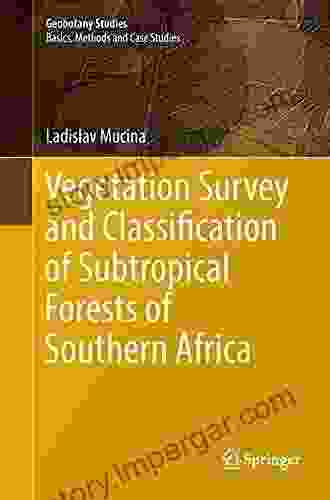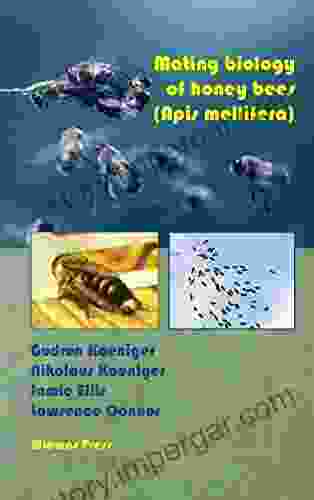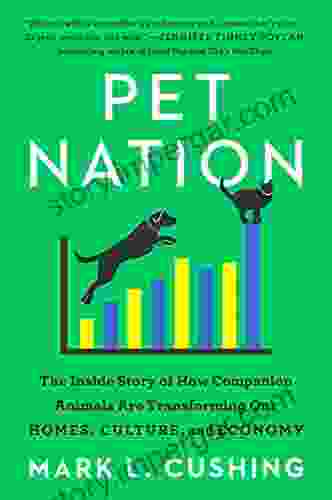Mating Biology of Honey Bees Apis Mellifera: An Essential Guide for Beekeepers and Entomologists

4 out of 5
| Language | : | English |
| File size | : | 12965 KB |
| Text-to-Speech | : | Enabled |
| Screen Reader | : | Supported |
| Enhanced typesetting | : | Enabled |
| Word Wise | : | Enabled |
| Print length | : | 155 pages |
Honey bees (Apis mellifera) are vital pollinators, playing a crucial role in global agriculture and ecosystems. Understanding their mating biology is fundamental for maintaining healthy honey bee populations and ensuring successful pollination services.
This comprehensive guide explores the intricate processes, environmental factors, and genetic mechanisms that govern honey bee reproduction. It provides beekeepers and entomologists with a detailed understanding of:
- The unique reproductive anatomy and behavior of honey bees
- The role of drone congregation areas and queen mating flights
- The genetic diversity of honey bee populations
- The influence of environmental factors on mating success
- Strategies for improving honey bee mating and swarm prevention
Reproductive Anatomy and Behavior
Honey bee colonies consist of three castes: the queen, workers, and drones. The queen is the only reproductive female, responsible for laying eggs that develop into workers or new queens. Workers are sterile females that perform various tasks within the hive, including caring for the brood, foraging for food, and protecting the colony.
Drones are male bees whose primary function is to mate with virgin queens. They have distinct reproductive organs, including enlarged eyes for locating the queen during mating flights and a specialized abdomen for sperm storage.
Mating in honey bees occurs during a specific mating flight, which takes place at designated drone congregation areas. These areas are typically located several kilometers from the hive and serve as gathering points for drones from multiple colonies.
Drone Congregation Areas and Queen Mating Flights
Drone congregation areas are typically open fields or meadows with landmarks such as trees, shrubs, or power lines. Drones from different hives gather at these sites, forming large swarms that can be visible from a distance.
Virgin queens emerge from their hives and embark on mating flights, seeking out the drone congregation areas. During these flights, they release pheromones that attract drones and encourage courtship behavior. Multiple drones will attempt to mate with the queen, but only one will be successful.
The successful drone transfers its sperm into the queen's spermatheca, where it is stored for use in fertilizing eggs throughout her lifetime.
Genetic Diversity in Honey Bees
Honey bee populations exhibit high levels of genetic diversity, resulting from both inbreeding and outbreeding. Inbreeding occurs when queens mate with related drones, leading to increased homozygosity and reduced genetic diversity.
Outbreeding, on the other hand, occurs when queens mate with drones from unrelated colonies, introducing new genetic material and increasing genetic diversity. Genetic diversity is essential for the long-term survival and adaptability of honey bee populations.
Environmental Factors Influencing Mating Success
Various environmental factors can influence the success of honey bee mating. Temperature, humidity, and wind speed play a role in the flight activity of both drones and queens.
Extreme temperatures or inclement weather can hinder mating flights and reduce the likelihood of successful mating. Additionally, pesticide exposure and habitat loss can impact the availability and quality of drone congregation areas.
Strategies for Improving Honey Bee Mating
Beekeepers can implement several strategies to improve honey bee mating and reduce the risk of swarm prevention. These strategies include:
- Providing adequate drone production: Ensuring a sufficient number of drones in the hive is crucial. This can be achieved by maintaining healthy and productive queen bees and providing ample drone comb space.
- Establishing drone congregation areas: Creating designated drone congregation areas within a few kilometers of the apiary can increase the chances of successful mating.
- Releasing marked queens: Marking virgin queens with colored paint or tags allows beekeepers to monitor their mating flights and identify the drones that successfully mate with them.
- Introducing unrelated drones: Bringing in drones from different genetic lines can increase genetic diversity and improve mating success.
Understanding the mating biology of honey bees is essential for maintaining healthy and productive colonies. By harnessing the intricate processes, environmental factors, and genetic mechanisms that govern honey bee reproduction, beekeepers and entomologists can effectively manage and improve honey bee populations, ensuring their continued role as vital pollinators.
This comprehensive guide provides a comprehensive overview of honey bee mating biology, empowering beekeepers and entomologists with the knowledge and strategies they need to foster successful mating and enhance the health and productivity of honey bee colonies.
4 out of 5
| Language | : | English |
| File size | : | 12965 KB |
| Text-to-Speech | : | Enabled |
| Screen Reader | : | Supported |
| Enhanced typesetting | : | Enabled |
| Word Wise | : | Enabled |
| Print length | : | 155 pages |
Do you want to contribute by writing guest posts on this blog?
Please contact us and send us a resume of previous articles that you have written.
 Book
Book Novel
Novel Page
Page Chapter
Chapter Text
Text Story
Story Genre
Genre Reader
Reader Library
Library Paperback
Paperback E-book
E-book Magazine
Magazine Newspaper
Newspaper Paragraph
Paragraph Sentence
Sentence Bookmark
Bookmark Shelf
Shelf Glossary
Glossary Bibliography
Bibliography Foreword
Foreword Preface
Preface Synopsis
Synopsis Annotation
Annotation Footnote
Footnote Manuscript
Manuscript Scroll
Scroll Codex
Codex Tome
Tome Bestseller
Bestseller Classics
Classics Library card
Library card Narrative
Narrative Biography
Biography Autobiography
Autobiography Memoir
Memoir Reference
Reference Encyclopedia
Encyclopedia Max Felker Kantor
Max Felker Kantor Mary Lawson
Mary Lawson Roy Kozlovsky
Roy Kozlovsky S P Srivastava
S P Srivastava Luke Hunter
Luke Hunter Mark J Holt
Mark J Holt Marjorie Eskay Auerbach
Marjorie Eskay Auerbach Paul Bowles
Paul Bowles Shivendra Nandan
Shivendra Nandan Simona Mariani
Simona Mariani Michael Block
Michael Block Maurice Maeterlinck
Maurice Maeterlinck Michael Wenderoth
Michael Wenderoth Sandra Lapointe
Sandra Lapointe S Angus
S Angus Marika Lindholm
Marika Lindholm Mark Richards
Mark Richards Mary Cascone
Mary Cascone Marin Montagut
Marin Montagut Robert Whitaker
Robert Whitaker
Light bulbAdvertise smarter! Our strategic ad space ensures maximum exposure. Reserve your spot today!

 Frank MitchellMothers Raising Sons: The Manual - Empowering Mothers to Raise Confident and...
Frank MitchellMothers Raising Sons: The Manual - Empowering Mothers to Raise Confident and... Eddie PowellFollow ·16.6k
Eddie PowellFollow ·16.6k William FaulknerFollow ·10.4k
William FaulknerFollow ·10.4k Jesus MitchellFollow ·3.9k
Jesus MitchellFollow ·3.9k F. Scott FitzgeraldFollow ·3.2k
F. Scott FitzgeraldFollow ·3.2k James JoyceFollow ·15.2k
James JoyceFollow ·15.2k Theo CoxFollow ·19.2k
Theo CoxFollow ·19.2k William ShakespeareFollow ·17.1k
William ShakespeareFollow ·17.1k Jan MitchellFollow ·3.7k
Jan MitchellFollow ·3.7k

 Roberto Bolaño
Roberto BolañoUnveiling the Beauty and History of the Medici Iris: A...
In the realm of...

 Theodore Mitchell
Theodore MitchellImproving Gut Health in Poultry: Unlocking the Path to...
In the ever-evolving field of...

 Victor Hugo
Victor HugoPersonalized Medicine with a Nanochemistry Twist:...
The future of healthcare...

 George Martin
George MartinA Year Of Wine: Perfect Pairings Great Buys And What To...
## Year of Wine: An Epic Journey Through the...

 Tom Hayes
Tom HayesDelve into the Enigmatic World of Southern Africa's...
Embark on a captivating journey through the...
4 out of 5
| Language | : | English |
| File size | : | 12965 KB |
| Text-to-Speech | : | Enabled |
| Screen Reader | : | Supported |
| Enhanced typesetting | : | Enabled |
| Word Wise | : | Enabled |
| Print length | : | 155 pages |












